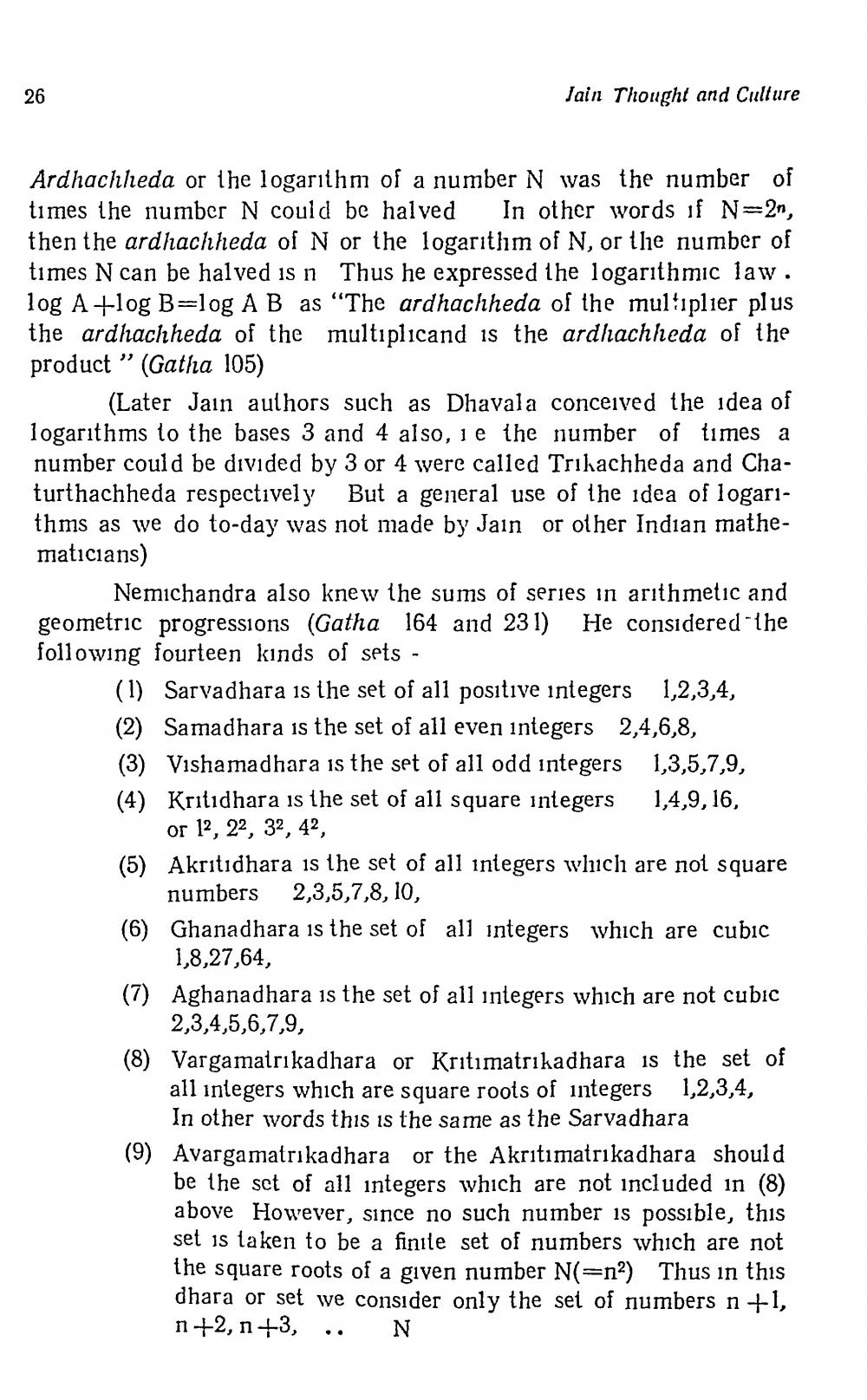________________
26
Jain Thought and Culture
Ardhachheda or the logarithm of a number N was the number of times the number N could be halved In other words if N=2n, then the ardhachheda of N or the logarithm of N, or the number of times N can be halved is n Thus he expressed the logarithmic law. log A +log B=log A B as "The ardhachheda of the multiplier plus the ardhachheda of the multiplicand is the ardhachheda of the product ” (Gatha 105)
(Later Jain authors such as Dhavala conceived the idea of logarithms to the bases 3 and 4 also, ie the number of times a number could be divided by 3 or 4 were called Trihachheda and Chaturthachheda respectively But a general use of the idea of logarithms as we do to-day was not made by Jain or other Indian mathematicians)
Nemichandra also knew the sums of series in arithmetic and geometric progressions (Gatha 164 and 231) He considered the following fourteen kinds of sets -
(1) Sarvadhara is the set of all positive integers 1,2,3,4, (2) Samadhara is the set of all even integers 2,4,6,8, (3) Vishamadhara is the set of all odd integers 1,3,5,7,9, (4) Kritidhara is the set of all square integers 1,4,9,16,
or 12, 22, 32, 42, (5) Akritıdhara is the set of all integers which are not square
numbers 2,3,5,7,8,10, (6) Ghanadhara is the set of all integers which are cubic
1,8,27,64, (7) Aghanadhara is the set of all integers which are not cubic
2,3,4,5,6,7,9, (8) Vargamatrikadhara or Kritimatrikadhara is the set of
all integers which are square roots of integers 1,2,3,4,
In other words this is the same as the Sarvadhara (9) Avargamatrikadhara or the Akritimatrikadhara should
be the set of all integers which are not included in (8) above However, since no such number is possible, this set is taken to be a finite set of numbers which are not the square roots of a given number N(=na) Thus in this dhara or set we consider only the set of numbers n +1, n+2, n+3, .. N




